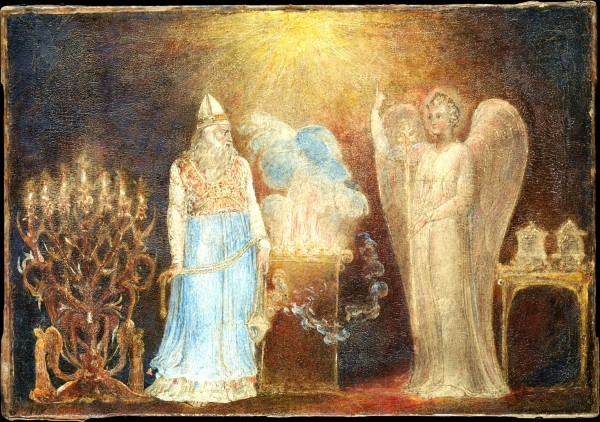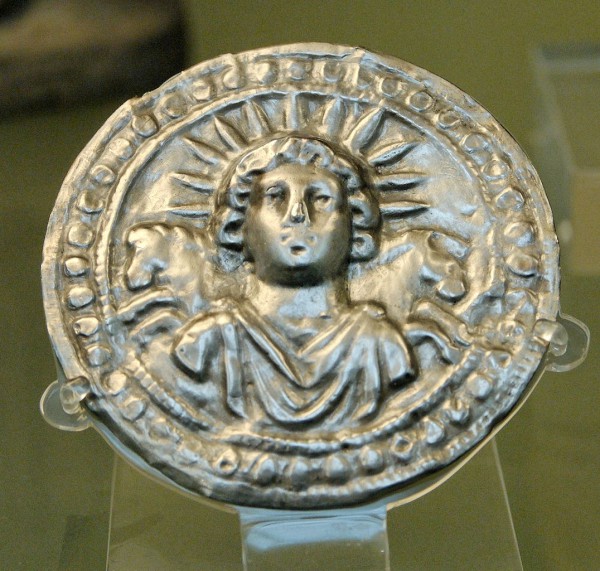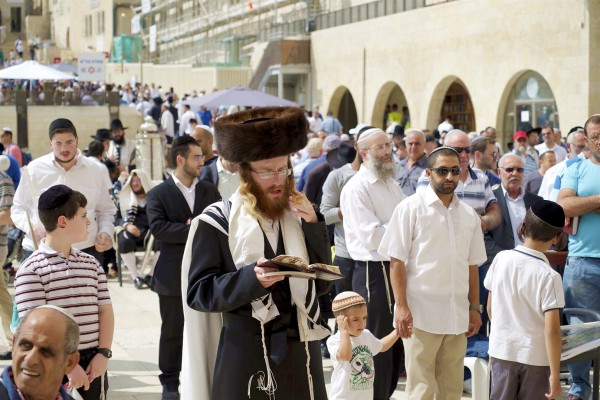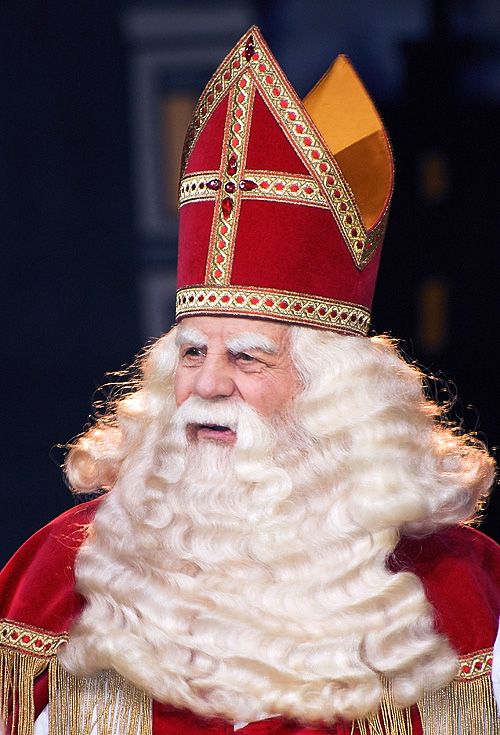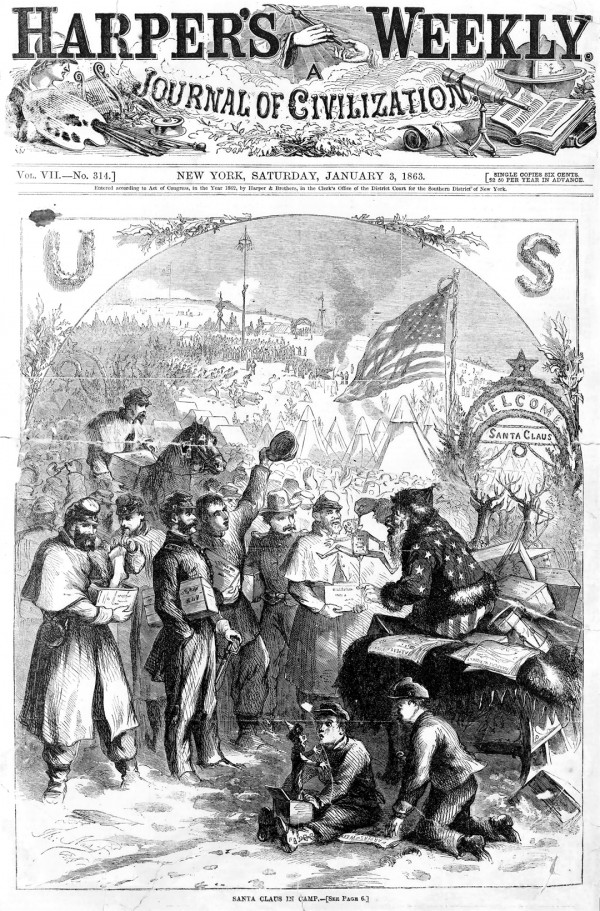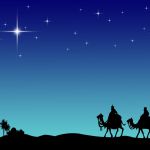“She will give birth to a son, and you are to give Him the name Yeshua [salvation], because He will save His people from their sins.” (Matthew 1:21)
For most Believers in Yeshua today, a spirit of joy and tenderness is triggered at this time of the year when they remember His birth and His coming to His Jewish people.
Among many other Believers, however, the holiday of Christmas is reviled because it is perceived as being a holiday of pagan origin.
While those who believe this are, perhaps, viewed with suspicion and in a minority among Gentile Believers, they are in excellent company.
Charles Spurgeon, a Strict Baptist preacher, who is revered today as a great theologian condemned Christmas as a pagan holiday. Despite that, he understood that it was a good day to spend time with family (since there are too few times we can do so) and an excellent time to discuss the birth of the Messiah.
“Since, the current of men’s thoughts is led this way just now, and I see no evil in the current itself, I shall launch the bark of our discourse upon that stream, and make use of the fact, which I shall neither justify nor condemn, by endeavoring to lead your thoughts in the same direction. … Regarding not the day, let us, nevertheless, give God thanks for the gift of His dear son.” (Spurgeon’s Joy Born at Bethlehem sermon)
We may not know the exact time that Messiah was born, but we can, like Spurgeon, make use of the current to reach out to others with the Good News of His coming and of redemption of our souls through his later suffering and death on the tree.
Often people are more open during the Christmas season and ready to hear the Good News. There is a change in the air, the feeling that things are different, lighter and cheerier. Others, however, are heavier, suffering from feelings of loneliness and depression, desperate for some good news of God’s love.
The birth of the Messiah to Miryam, a virgin, was miraculous as was the life that Yeshua lived—a completely holy life without flaw. This flawless lamb became Kapora, a sacrifice for us who are in need of redemption and forgiveness of sin.
Through Yeshua, God shows us His love for all mankind, that He was willing to sacrifice His only begotten Son that we might have eternal life. The name Yeshua, in fact, means salvation.
The Birth of the Messiah
Many questions remain as to when Yeshua was born. Was He really born in Bethlehem during the winter? The Brit Chadashah (New Covenant) speaks of shepherds tending their sheep in the fields:
“And there were shepherds living out in the fields nearby, keeping watch over their flocks at night. An angel of the Lord appeared to them, and the glory of the Lord shone around them, and they were terrified. But the angel said to them, ‘Do not be afraid. I bring you good news that will cause great joy for all the people. Today in the town of David a Savior has been born to you; He is the Messiah, the Lord. This will be a sign to you: You will find a baby wrapped in cloths and lying in a manger.’” (Luke 2:8–12)
We suspect that these were the sheep intended for sacrifice in the daily Temple ceremonies; however, Jerusalem and its environs can be extremely cold in late December and often are covered in snow, making it unlikely that the shepherds would have been able to graze their sheep at that time of the year, sleeping with them outside.
While the Bible does not specify the timing of His birth, like it does for His death and resurrection, we do have some Biblical clues that lead us to determine its approximate timing:
- Miryam (Mary) conceived when her cousin Elisheva (Elizabeth) was in her sixth month of pregnancy (Luke 1:24–26).
-
Elizabeth probably conceived early in the fifth month of the Jewish calendar (Av or early July). This is likely since the angel Gabriel appeared to her husband Zachariah while he was serving in the Temple as a priest in the division of Abijah (Luke 1:5), and advised him that Elizabeth would become pregnant (Luke 1:11–24).
The Talmud and other historical sources reveal that the Abijah served during the last two weeks of the fourth month of the Jewish calendar (Tammuz), which is about late June.
And the Bible says that after Zechariah came home from his service (in early Av), Elizabeth conceived (Luke 1:23–25).
- Nine months of pregnancy and another six months of Mary’s pregnancy (15 months total) brings us to the seventh month of the Jewish calendar (Tishrei), during which falls Sukkot (Feast of Tabernacles).
The apostle John tells us how Yeshua is the Word that tabernacled among us.
“And the Word became flesh and dwelt [eskēnōsen] among us, and we have seen His glory, glory as of the only Son from the Father, full of grace and truth.” (John 1:14)
The word that John uses in Greek for dwell and tabernacle share the same root word, skéné.
“But when the Jewish Festival of Tabernacles [skēnopēgia] was near …” (John 7:2)
Through these Biblical, historical, and linguistic clues, we can come to a fairly educated guess that Yeshua may have, indeed, been born during the season of Sukkot, also known as the Feast of Tabernacles, which occurs in late September or early October.

A Jewish man prays in a sukkah. As he prays he shakes the Four Species that are mentioned in Leviticus 23:40.
When Did the Christmas Celebrations Begin?
Yeshua’s disciples and first and second century Believers did not celebrate the birth of Yeshua.
No extra-Biblical evidence supporting the existence of this celebration exists in the writings of such Church fathers as Irenaeus (c. 130–200) or Tertullian (c. 160–225).
Origen of Alexandria (c. 165–264) actually writes against such practices, as they as were “pagan” practices celebrated by the Romans.
Thus, it is fair to say that at least at this point in time, it was not celebrated.
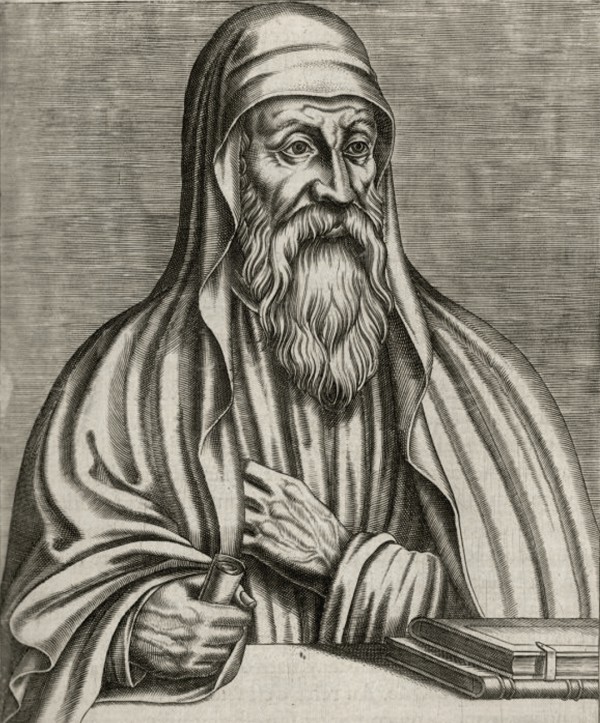
An illustration of Origen from the book, “Les Vrais Portraits Et Vies Des Hommes Illustres” by André Thévet
Clement of Alexandria (c. 150 – c. 215), a Christian teacher in Egypt, perhaps first made reference to the calculation of Yeshua’s birth date.
He writes of several days having been proposed by different Christian groups.
Clement doesn’t mention December 25 at all. He writes:
“There are those who have determined not only the year of our Lord’s birth, but also the day; and they say that it took place in the 28th year of Augustus, and in the 25th day of [the Egyptian month] Pachon [May 20 in our calendar] … And treating of His Passion, with very great accuracy, some say that it took place in the 16th year of Tiberius, on the 25th of Phamenoth [March 21]; and others on the 25th of Pharmuthi [April 21] and others say that on the 19th of Pharmuthi [April 15] the Savior suffered. Further, others say that He was born on the 24th or 25th of Pharmuthi [April 20 or 21].” (Biblical Archaeology)
Around 200, Tertullian of Carthage reported that the Hebrew date on which Yeshua was crucified, Nissan 14, corresponded to March 25 on the Roman calendar, which is nine months prior to December 25.
March 25 came to be celebrated as the Feast of the Annunciation, the time at which Yeshua was conceived. By that reasoning and calculation, then, He would be born exactly nine months on December 25.
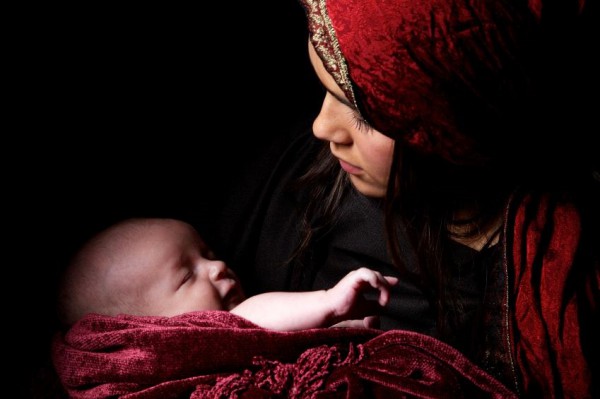
“She wrapped him in cloths and placed him in a manger, because there was no guest room available for them.” (Luke 2:7)
Christmas vs. Solis Invicti
The later selection of December 25 as the date to celebrate the birth of the Messiah was a decision made by the Catholic Church. The decision allowed for the inclusion of the pagan worshipers of that time who were used to celebrating the festival of Dies Natalis Solis Invicti, or “Birthday of the Invincible Sun.”
These pagan sun worshipers had set aside that day and dedicated it to Sol Invictus (Unconquered Sun), the official sun god of the later Roman Empire.
Depictions of Sol Invictus appear in the mosaics of structures uncovered in Israel including a mosaic floor in Hamat, Tiberias and in decorations surviving from Late Antique synagogues, including Beth Alpha and Husefah.
In 274, the Roman emperor Aurelian officially recognized this sun god and created an official cult that was favored by future emperors up until Constantine I.
Constantine was a strong adherent to the sun god Sol Invictus. He portrayed him in the coinage of his reign and on March 7, 321 declared dies Solis—day of sun, “Sunday”—as the Roman day of rest.
Evidence suggests that the association of Messiah’s birth with the day of Sol Invictus began sometime in the mid 4th century.
The Philocalian calendar from a manuscript produced for a wealthy Roman Christian named Valentinus, of AD 354 shows the day as being the festival of “Natalis Invicti” (Birth of the Invincible).
The prior celebration of that day had been proclaimed by Aurelian who was an ardent worshiper of the Syrian sun-god Baal.
Identified with Sol Invictus was the figure of Mithra—a strange eastern god whose cult worship was similar to that of those who worshiped Yeshua, forming at one time a rival to ancient Christianity.
Mithraism in many ways reflected the beliefs and practices of Christianity with its tendency toward monotheistic thinking, its many sacraments, its doctrine of an Intercessor and Redeemer, and its belief in a future life and a future judgment. The followers of Mithra also set aside Sunday as a holy day dedicated to the Sun.
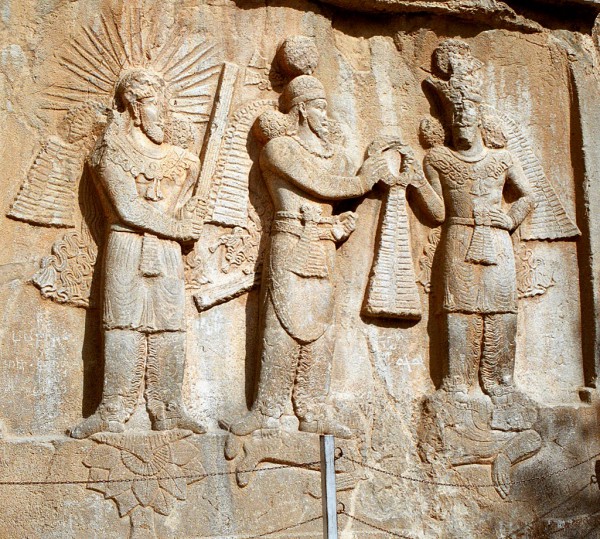
Using a raised barsom, Mithra (left) sanctifies the investiture of Sassanid emperor Ardashir I or II (3rd century CE bas-relief at Taq-e Bostan, Iran).
Christmas vs. Saturnalia and Anti-Semitism
The establishment of December 25 as the day of worship of the birth of the Messiah coincides with another pagan holiday called Saturnalia.
This was a week-long celebration of lawlessness in which the courts were closed and all manners of lewdness were allowed.
It was marked by licentiousness, rape, and indulgence in any and all immoral acts.
To bring the pagans into the church, they were essentially allowed to continue to also celebrate this festival as Christians. Consequently, the earliest Christmas celebrations included drinking, sexual indulgence and singing naked in the streets (which evolved into the more “holy” tradition of caroling today).
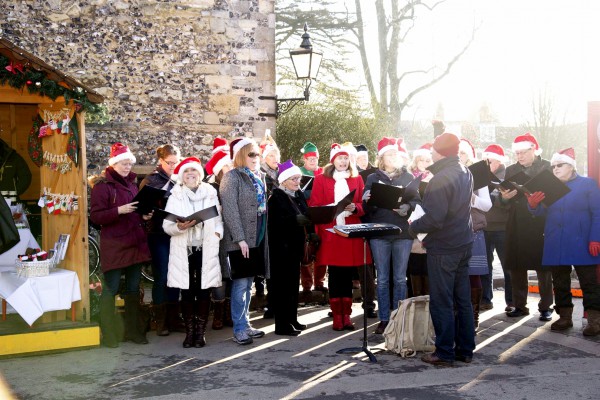
Members of the Winchester Musicals and Opera Society sing carols at Winchester Cathedral in England.
Over times, many other pagan traditions and practices were “absorbed” into Christmas traditions.
In fact, by the 17th century in England, Christmas was marked by many practices that could lead to drunkenness, promiscuity and other acts of immorality through excessive eating, drinking and partying.
Some have argued that this was intended as a kind of safety valve to relieve tensions within English society built up during the year when such practices were soundly forbidden.
The debauchery and excesses led the Puritans to reject Christmas.
Their campaign against these Christmas practices gained the support of both houses of Parliament. (History Today)
In the colony of Massachusetts, the Puritans banned its celebration between 1659 and 1681. (simpletoremember)
Pagan practice during this week, however, lingered on, even becoming an excuse for violent expressions of anti-Semitism.
As late as the 18th and 19th centuries, the rabbis of the ghetto in Rome were required to dress up like clowns during the Saturnalia carnival. They were forced to march through the streets while jeering crowds pelted them with various missiles.
On December 25, 1881, in Poland, the mobs were whipped into a frenzy and attacked Jewish communities throughout the country. In Warsaw alone, 12 were killed and many maimed while scores of women were raped.
Origins of Christmas Customs
Although many Christmas customs like caroling have beautiful interpretations and explanations, they originally had nothing to do with the birth of the Messiah. Rather, they spring from the very sin that Yeshua came to redeem us from.
Here are the origins of a few more Christmastime customs:
The Christmas tree
The Christmas tree, which is a fairly recent innovation, has been connected to the Canaanite worship of the Asherah pole and the adoration of trees, including bringing them into their homes and decorating them. The pagans also regarded the Evergreen tree as a phallic symbol in fertility worship.
The tree has also been connected to traveling troupes of minstrels and actors in late 1600’s Germany, who used felled Evergreen trees as props to depict Biblical ideas, such as the Tree of Knowledge and the Tree of Life.
The tree began to make its way into the home in Alsace, and although the Catholic Church at first resisted it, when Queen Victoria erected one in the 1800s, its popularity spread rapidly.
Mistletoe
The Druids used mistletoe to poison their human sacrificial victims. Its use at Christmas time is reminiscent of the sexual license of Saturnalia combined with the Druidic sacrificial cult.
Pagans believed that the white berries of mistletoe represented the drops of semen of the sun god. Holly, along with mistletoe, was hung in the doorways of temples and homes to bring about the powers of fertility in those who stood beneath and kissed, causing the spirits of the god and goddess to enter them.
Giving Presents
During the time of the Roman Saturnalia, the most despised citizens were compelled to bring offerings and gifts. This led to general gift-giving among the populace and it carried over into the Christian celebration of Christmas where it was given a new root, linking it with the gift-giving of Saint Nicholas.
Gift giving was more common on New Year’s Day until the mid-19th century when the British royals began trading gifts on Christmas Eve. In 1841, Queen Victoria gave her husband, Prince Albert a portrait of herself at age 7. In 1850, Queen Victoria’s children received such gifts as a sword and armor. And in 1859, Victoria gave Albert a book of poetry by Alfred Lord Tennyson. (Live Science)
Many feel that the extreme level that gift giving has reached at the present time is reminiscent of the revelry and drunkenness that caused disdain among the Puritans.
The Invention of Santa Claus
Santa Claus is a fairly recent innovation connected to some very old traditions. Some trace the origin of Santa Claus to Nicholas, who was born in Parara, Turkey in AD 270 and later became Bishop of Myra. He was known for his generous giving to the needy, often anonymously, sometimes placing coins in the shoes of the poor.
Nicholas died in AD 343 on December 6th. He soon became nicknamed Sinter Klaas or Saint Nicholas by the people with a feast day set aside for him, but has never been officially canonized by the Catholic Church.
In 1087, a group of sailors who idolized Nicholas moved his bones from Turkey to a sanctuary in Bari, Italy. There, veneration of him became mixed with celebration of Pasqua Epiphania (the grandmother) who was thought to fill children’s stockings with gifts. A cult grew up around Nicholas, and members gave each other gifts during the remembrance of Nicholas’ death on December 6.
The cult spread north where it was adopted by German and Celtic pagans. Their chief god was Woden who had a long white beard. When Nicolas merged with Woden, he shed his Mediterranean appearance and took on the white beard and heavy winter clothing.
In an attempt to attract pagan adherents, the Catholic Church adopted the Nicholas cult and taught that gifts should be distributed as he did, on December 25th rather than on December 6th.
The name Santa Claus was given to him by the Dutch and picked up and used in a satire by the American writer Washington Irving of the “Headless Horseman” fame.
In 1823, Clement Moore, who became a president of Columbia University and Bible teacher at New York’s Theological Seminary read the satire and wrote the poem “The night before Christmas,” describing Saint Nicholas as a “Santa” with eight reindeer coming down through the chimney on Christmas Eve.
How, exactly, did this Santa look like? That puzzle was not solved until the German-born illustrator Thomas Nast drew cartoons of Santa Claus, which appeared in Harper’s Weekly. He also gave Santa his North Pole home and elves, drawing from German folklore. The visual elements of much of our Christmas nostalgia regarding Santa Claus can be found in Nast’s 1890 collection of illustrations, Christmas Drawings for the Human Race.
The finishing touches were provided by the Coca Cola Corporation, which in 1932 depicted a coke-drinking Santa wearing a red suit reflecting Coca Cola red. (simpletoremember)
As to the Jewish view of Christmas trees and Santa Claus, one need go no further than Jeremiah 10:1–4, which cautions against learning the way of the nations.
“Hear what the LORD says to you, people of Israel. This is what the LORD says: “Do not learn the ways of the nations or be terrified by signs in the heavens, though the nations are terrified by them. For the practices of the peoples are worthless; they cut a tree out of the forest, and a craftsman shapes it with his chisel. They adorn it with silver and gold; they fasten it with hammer and nails so it will not totter.”
Apart from the prophetic fulfillment of Bible verses promising the Jewish Messiah, today Christmas suffers from a complete lack of Jewish identity, having drawn much from pagan traditions and ceremonies.
Jewish Festivals Outside the Bible
The fact that Christmas is extra-Biblical is perhaps not really the issue, since both the Jewish holidays of Purim and Hanukkah also were not times appointed by God.
Hanukkah celebrates the victory of Judas Maccabeus over the Greek Antiochus IV Epiphanes and the rededication of the Temple that had been desecrated by the Greeks in 165 BC.
The books 1 Maccabees and 2 Maccabees, which are not in the Bible, describe the eight-day rededication of the Temple, but give no mention of the miracle of the oil that burned for eight days.
The Jewish Roman historian Josephus describes how Judas Maccabeus ordered lavish eight-day yearly festivals commemorating the rededication of the Temple not calling the festival Hanukkah but the “Festival of Lights.”

A Jewish mother enjoys the Chanukah lights with her daughters. (Photo by Dana Friedlander / Go Israel)
It was only 600 years after the events described in 1 Maccabees and 2 Maccabees had occurred that mention is made of the Hanukkah miracle in the Talmud.
And although the roots of this holiday, like Christmas, are buried in the past, even Yeshua celebrated it.
Today, many people around the world will rejoice His birth and the salvation that all who receive Him receive.
Although Bibles For Israel, as well as many of our readers and supporters, do not promote Christmas, this is a good day to make much of the gift of Yeshua, and to share the Good News of His coming to all who will listen.
“Make the most of your opportunities because these are evil days.” (Ephesians 5:16)








